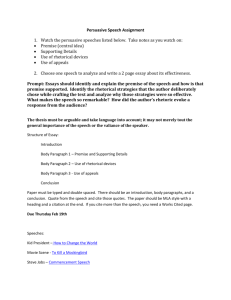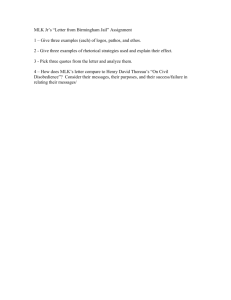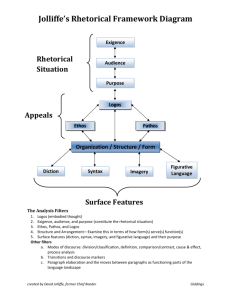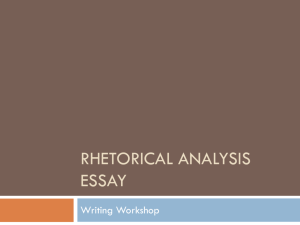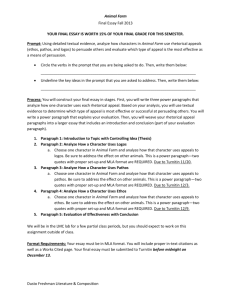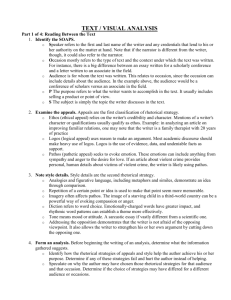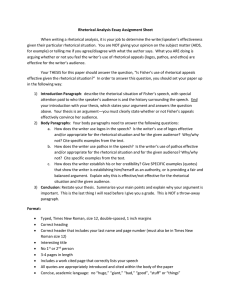Guidelines for a Rhetorical Analysis The purpose of a rhetorical
advertisement
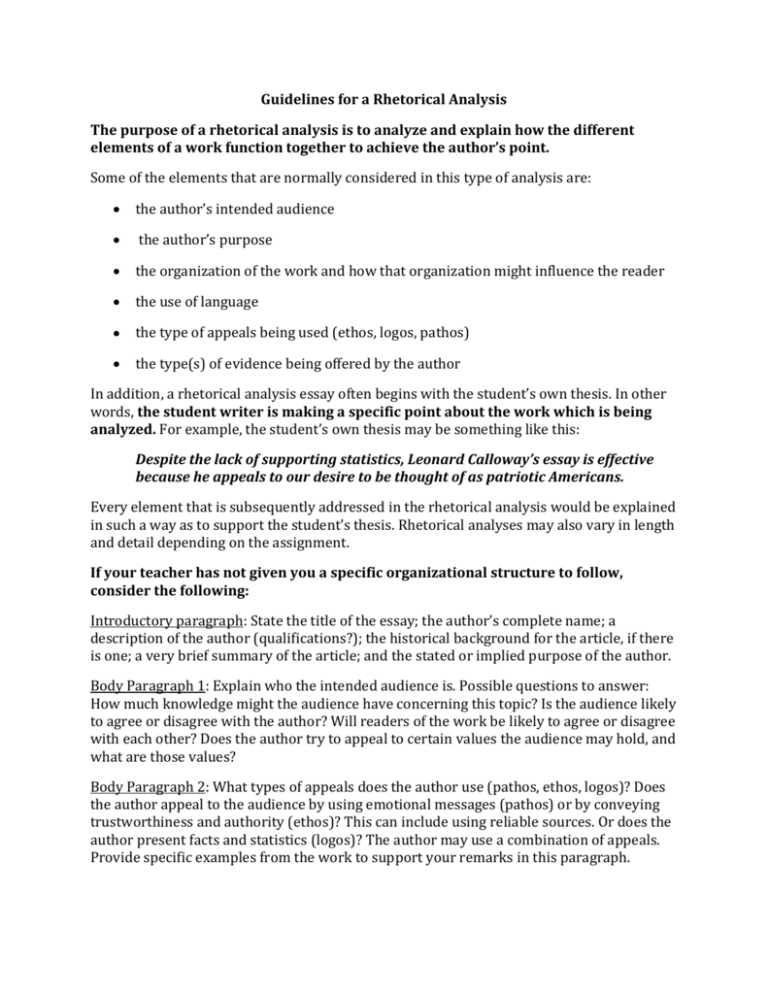
Guidelines for a Rhetorical Analysis The purpose of a rhetorical analysis is to analyze and explain how the different elements of a work function together to achieve the author’s point. Some of the elements that are normally considered in this type of analysis are: • • • • • • the author’s intended audience the author’s purpose the organization of the work and how that organization might influence the reader the use of language the type of appeals being used (ethos, logos, pathos) the type(s) of evidence being offered by the author In addition, a rhetorical analysis essay often begins with the student’s own thesis. In other words, the student writer is making a specific point about the work which is being analyzed. For example, the student’s own thesis may be something like this: Despite the lack of supporting statistics, Leonard Calloway’s essay is effective because he appeals to our desire to be thought of as patriotic Americans. Every element that is subsequently addressed in the rhetorical analysis would be explained in such a way as to support the student’s thesis. Rhetorical analyses may also vary in length and detail depending on the assignment. If your teacher has not given you a specific organizational structure to follow, consider the following: Introductory paragraph: State the title of the essay; the author’s complete name; a description of the author (qualifications?); the historical background for the article, if there is one; a very brief summary of the article; and the stated or implied purpose of the author. Body Paragraph 1: Explain who the intended audience is. Possible questions to answer: How much knowledge might the audience have concerning this topic? Is the audience likely to agree or disagree with the author? Will readers of the work be likely to agree or disagree with each other? Does the author try to appeal to certain values the audience may hold, and what are those values? Body Paragraph 2: What types of appeals does the author use (pathos, ethos, logos)? Does the author appeal to the audience by using emotional messages (pathos) or by conveying trustworthiness and authority (ethos)? This can include using reliable sources. Or does the author present facts and statistics (logos)? The author may use a combination of appeals. Provide specific examples from the work to support your remarks in this paragraph. Body Paragraph 3: Evaluate the effectiveness of the work. This is your opinion, of course. Explain why you think the author has, or has not, adequately accomplished his or her purpose. You may refer to yourself in this paragraph. Concluding Paragraph: Ask your teacher if she wants a conclusion for this assignment as some prefer not to have conclusions to rhetorical analyses. If a conclusion is needed, use it as an opportunity to re-assert the thesis statement and briefly summarize (without being too repetitive) the main points you have discussed.





